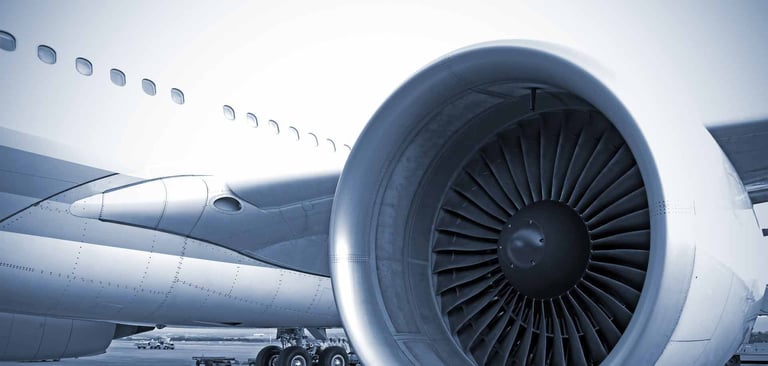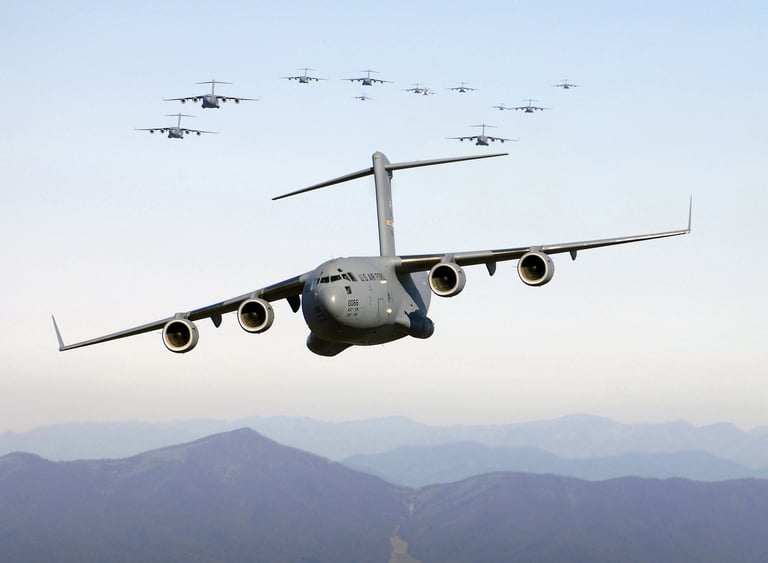Rolls Royce (LON:RR) has provided its trading & Trent 1000 update.
Trading update:
· Improved trading since the Half Year, however we now expect Full Year operating profit and FCF outcome towards the lower end of guidance ranges
· At least £1bn FCF in 2020, underpinned by restructuring benefits, operational efficiency improvements, further efforts to reduce inventory and disciplined approach to capital allocation
· Confident in mid-term ambition of £1 per share of FCF as Trent 1000 costs subside
Trent 1000 review provides greater certainty to customers and clarity to investors:
· Progress in resolving Trent 1000 issues with only one major design fix remaining
· Improved high pressure turbine (HPT) blade for Trent 1000 TEN – the final fundamental issue to address – postponed to 2021. Based upon recent testing and our detailed technical evaluation we are resetting financial and operational expectations for the Trent 1000 TEN based on a more conservative estimate of final HPT durability
· Total expected in-service cash costs of around £2.4bn across 2017-2023. This includes £1.6bn as previously guided, the £400m increase announced today, and £400m of Trent 1000 TEN costs previously included within normal programme contingency
· To minimise the impact on customers, further actions underway including accelerated investments in additional maintenance capacity and spare engines to reduce disruption
· Full financial analysis of Trent 1000 TEN results in a likely exceptional charge of c.£1.4bn to operating profit in FY 2019. This represents the additional near term costs of customer disruption and remediation shop visits highlighted above, and provisions against future losses on a small number of contracts due to our new estimate of HPT durability
· No material cash or profit effect anticipated on the Trent 7000 following impact assessment
Warren East, CEO, Rolls-Royce said: “In spite of improved trading since the Half Year, we now expect Full Year operating profit and free cash flow to be towards the lower end of our guidance ranges. In Civil Aerospace, while the Trent 1000 costs remain a headwind, the vast majority of our installed fleet of widebody engines is performing well, with the Trent XWB surpassing our expectations. We have seen growth in ITP and steady sales in Defence. In Power Systems, while trading remains healthy, a small number of larger projects have been deferred and as a result we now expect sales growth for the Full Year in the low- to mid-single-digit range.
“My top priority is improving customer confidence in the Trent 1000. We are today announcing additional action to further expand our maintenance capacity and increase our stock of spare engines. We deeply regret the ongoing disruption caused to customers. These steps, which build upon progress made to date, will further reduce disruption to our airline customers and give them the certainty that they need.
“We have completed a detailed technical evaluation of our work on an improved high pressure turbine blade for Trent 1000 TEN, the last major redesign activity required for the issues which we have identified with the engine. Although we regret that the blade will not be ready when we had originally planned, our understanding of the technical issues has significantly improved. As a result we are now able to reset our financial and operational expectations for the engine based on a blade design with a prudent durability estimate that we are confident we can deliver. This will give our customers and ourselves a higher degree of certainty as we plan for the servicing of the fleet over the coming years.
“With this increased understanding we have been able to carry out a full financial review of the Trent 1000. The result is a revised assessment of cost and future profitability of the programme to provide greater clarity for investors.
“We expect to deliver at least £1bn of FCF in 2020, underpinned by the benefits of our restructuring programme, operating efficiency improvements, further efforts to reduce inventory and disciplined capital allocation. Longer term as the Trent 1000 costs subside, we remain confident in our mid-term ambition of at least £1 of FCF per share.”
Group trading update
In the coming weeks we expect to reach a significant milestone in our Civil Aerospace business with our widebody installed fleet surpassing 5,000 engines – this is a 50% increase over the past decade. The vast majority of our installed fleet is performing well with continued growth in widebody engine flying hours in the third quarter. The Trent XWB, which is around 15% of our fleet today, and will be more than half of our new deliveries in the coming years, is surpassing our expectations for in-service reliability. Visual inspections and positive engine health monitoring data have allowed us to keep the fleet leader Trent XWB-84 engines flying for longer than initially expected. As a result, we are increasingly confident that the engine will meet and potentially exceed the initial expectations we had for durability and performance. The Trent 700, which represents around one third of our installed fleet today, also continues to deliver excellent performance. We recently announced the launch of the Pearl 700 business jet engine to power the new Gulfstream G700. Along with the Pearl 15 announced last year, this secures our market-leading position in business jets.
In Defence, we continue to expect steady sales and modest margin decline in 2019. Investment is progressing well on next generation programmes to underpin the long term success of our Defence business in both the UK and US markets.
In Power Systems, the diversified nature of our business and our globalisation strategy has supported continued growth in the third quarter, despite challenging conditions in certain end markets. However, due to delivery deferrals on a small number of larger projects, we now expect revenue growth in the low- to mid-single-digit range for the Full Year, versus prior expectations for mid-single-digit growth.
While we are progressing with our efforts to reduce year-end inventory from the elevated levels seen at the Half Year results, the pace has been slower than planned. We now expect Full Year inventory to be at a broadly similar level to December 2018. We have made strong progress in our efforts to improve working capital efficiency, with increased discipline around overdue debt collection and pursuing contractual entitlements. Defence has continued to benefit from better-than-expected deposit flows. Along with discretionary cost control, this strong contribution from working capital is helping to offset the material Trent 1000 cash costs we are currently absorbing.
We have continued to deliver on the restructuring plan we announced on 14 June 2018. The result will be a simpler, leaner and more agile organisation. The focus to date has been on establishing our new operating model and on delivering the targeted 4,600 headcount reduction by the end of 2020. We updated on 6 August 2019 that we had delivered one third of these reductions and we expect to deliver more than half of the total programme reductions by the end of this year.
Trent 1000 technical update
Returning the Trent 1000 fleet to the level of service which our customers expect is the top priority of senior management and the Board. We have been dealing with three significant technical issues which have affected each of the three variants of the Trent 1000 (Package B, Package C and TEN). Of the nine fixes therefore required, we have so far designed eight and certified seven which are now being incorporated into the fleet.
A new HPT blade for the Trent 1000 TEN variant is the final modification required. Ahead of our plans to start incorporating this into the fleet in early 2020, we have completed a detailed technical evaluation of our proposed HPT redesign. We have now identified that it will not deliver a sufficient level of enhanced durability and as such we are being prudent in assuming that an improved blade is unlikely to be ready before the first half of 2021. Through our work we have significantly improved our understanding of the issue. We are now able to reset our financial and operational expectations for the Trent 1000 TEN on the basis of a subsequent final HPT design, with a more conservative durability estimate that we are confident we can deliver. This estimate is lower than our initial target but sufficient to meet the needs of our customers, and allows us to update our forecasts of future shop visits and maintenance costs. This work will provide customers with a clearer view of their fleet’s servicing requirements and provide investors with a clearer view of future costs.
Additional action to accelerate the recovery of the Trent 1000 fleet
We are determined to reduce the unacceptable level of disruption we are causing customers and to bring the number of aircraft on ground (AOG) down to single digit levels by the end of Q2 2020 – as stated in our update of 20 September 2019. In light of the engineering and financial work described above and the regrettable postponement of the new HPT blade design, we are today announcing further action to provide customers with greater aircraft availability:
· We will invest significantly to increase our stock of spare engines which will be deployed to dramatically reduce the time it takes to get aircraft flying again. This helps ensure that we can keep AOG levels low. We aim to offset the significant majority of this capital expenditure as we reprioritise spend and deliver savings elsewhere.
· We are further accelerating plans to grow our MRO network, with several major projects underway to deliver a near term increase in capacity for the Trent 1000. These include the announcement today that part of our existing sites in Dahlewitz and Montreal will transition to become service hubs with the capability of handling Trent 1000 engine overhauls. We have secured the use of an additional test bed at Dallas Fort Worth to support Trent 1000 engine tests. Additionally, we are investing to expand our capacity in Derby and double our overhaul capacity at Heathrow. This investment marks a step-change in our MRO expansion plans and will assist us over the longer term in meeting the servicing demands of our growing installed base.
· We will further step up our investment in engineering to support the specialist team which has been assembled to focus on resolving the final design and engineering challenges on the Trent 1000. This effort will be aided by a bespoke facility we have created in Derby dedicated to Trent 1000 test engines, which is now fully operational, enabling faster testing and validation of new component designs.
Greater clarity on financial impact of Trent 1000
We have conducted a thorough review of the Trent 1000 programme. Building on our increased understanding of the Trent 1000 TEN HPT issue, Management and the Board now have a clearer view of the costs associated with resolving the in-service issues. We now expect total in-service cash costs of around £2.4bn across 2017-2023. This includes £1.6bn as previously guided at the Half Year and a £400m increase in estimated costs across all Trent 1000 variants. It also now includes the £400m of Trent 1000 TEN costs previously included within normal annual programme contingency. In 2017-18 we incurred £550m of cost on the Trent 1000. We now expect the overall cash impact of dealing with the in-service issues on all variants of the Trent 1000 to be c.£550m in 2019. We expect costs of £450-550m in 2020 and a similar level in 2021, before declining significantly thereafter.
Separately, as a result of this review, we expect to take an exceptional charge on the Trent 1000 of c.£1.4bn in 2019. This charge will primarily comprise:
· Those additional cash costs associated with customer disruption and remediation shop visits.
· The recognition of future contract losses from a small number of customer contracts. The cash impact occurs over the 10-15 year life of the contracts.
We continue to work through the full accounting treatment and will provide further detail at our Full Year results.
Implications for the Trent 7000
The Trent 7000, which accounts for 1% of our fleet, shares much of the same core design as the Trent 1000 TEN, but has a less arduous usage profile in-service. As a result we continue to expect a materially improved in-service durability of the HPT relative to the Trent 1000 TEN. It has always been our intention to introduce the new Trent 1000 TEN HPT blade to the Trent 7000 fleet when it becomes available. The postponed Trent 1000 TEN HPT blade redesign will therefore result in later introduction into the Trent 7000. However, we do not expect a material financial impact, due the younger and smaller Trent 7000 fleet, together with its less arduous usage profile. We have also been able to plan our maintenance capacity and spare engine provision appropriately to safeguard against customer disruption.
Conference call and presentation details
We will be hosting a conference call and WebEx for analysts and investors at 8.30am GMT on November 7. To dial-in to the call, including Q&A participation, please use the dial-in details below:
United Kingdom Toll-Free: 08003589473
United Kingdom Toll: +44 3333000804
URL for international dial in numbers: http://events.arkadin.com/ev/docs/NE_W2_TF_Events_International_Access_List.pdf
PIN: 42945821#
To view the corresponding presentation via WebEx please use the link below: https://exostar.webex.com/exostar/e.php?MTID=m3494d458448e1d5e84abb27465073660
Disclosures
All commentary in this release relates to the performance of the core business at underlying FX rates.
Full Year 2019 results
Our 2019 Full Year results will be announced on 28 February 2020.
This announcement has been determined to contain inside information.
About Rolls-Royce Holdings plc
1. Rolls-Royce pioneers cutting-edge technologies that deliver clean, safe and competitive solutions to meet our planet’s vital power needs.
2. Rolls-Royce has customers in more than 150 countries, comprising more than 400 airlines and leasing customers, 160 armed forces, 70 navies, and more than 5,000 power and nuclear customers.
3. Annual underlying revenue was £15 billion in 2018, around half of which came from the provision of aftermarket services.
4. In 2018, Rolls-Royce invested £1.4 billion on research and development. We also support a global network of 29 University Technology Centres, which position Rolls-Royce engineers at the forefront of scientific research.
5. The Group has a strong commitment to apprentice and graduate recruitment and to further developing employee skills.








































